The Ukrainian Twitter and the newsfeeds have been swept by the wave of fake hits claiming that Ukrainian people purportedly “resist to Zelensky and revolt against the electricity saving mode.” However, the pathetic attempt ended with as few as 43 tweets about a pseudo flash mob from 21 accounts, 12 of which were bots.
On November, 1, 2022, a collaborator and a former Ukrainian MP, Illya Kyva, posted the news saying that Ukrainian people were allegedly “waking up” to “fight” Zelensky regime as they refuse to cut down on electricity consumption as the government requests. Thus, he declared the “flash mob” among the Ukrainian users with the hashtag #LightOnZelenskyyOff.
OPORA could not ignore the case and analyzed how Russians were trying to launch the disinformation wave among Twiter users, and how Ukrainian users mocked it. Essentially, we also focused on the lessons to be learnt from the anti-disinformation strategy.
Where Is It All Coming From?
With the help of the analytic tool Hoaxy, we tracked the attempt to unfold the PSYOP (informational psychological operation trying to impact human emotions and behaviours, and shape the response of the government, organizations, groups, etc. – ed.) under a hashtag #LightOnZelenskyyOff in Twiter’s Ukrainian segment.
The first profile encouraging to resist the energy saving mode was @MandyBoulden15 in reply to the tweet from the advisor of the PO’s chief, Mykhaylo Podoliak, back on October, 29.
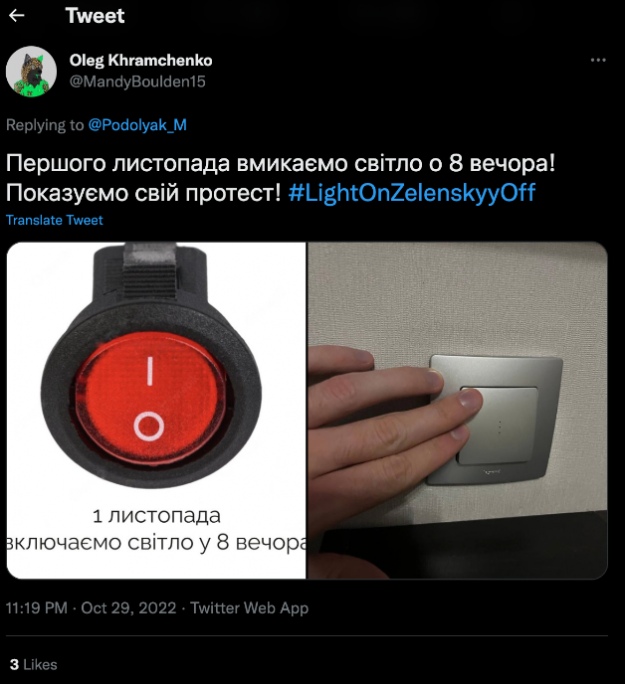
Let’s switch on the electricity on November, 1, at 8 pm! Let’s show our protest!
The next stage of the Twiter operation was to share disinformation about the “flash mob” in English, French, and Italian.
At the moment of drafting this coverage, the posts in Italian and English languages had been deleted. However, we managed to get some details about them with the help of the analytical tool Socialbearing.
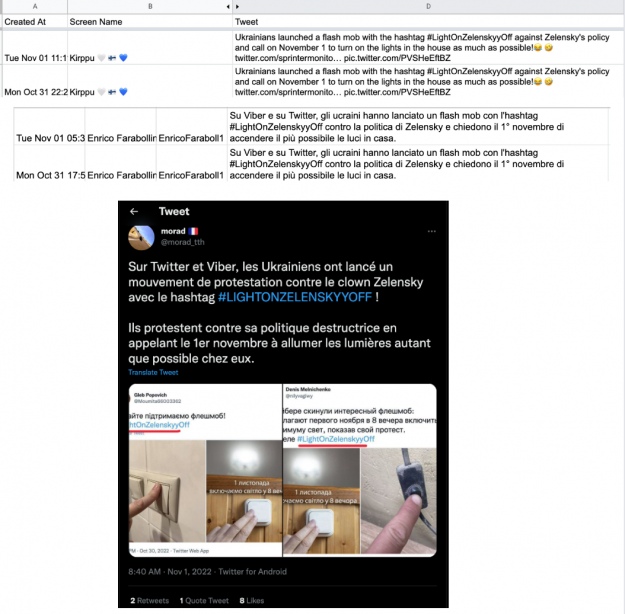
Я
What is the Scale of this Disinformation Wave?
In total, over the period from October, 29, to November, 1, among the 203 tweets with the hashtag #LightOnZelenskyyOff (including the retweets and replies), as few as 43 tweets shared the disinformation about the flash mob.
The Botometer tool helped us identify that among the 21 accounts sharing disinformation posts, 12 are most likely automated, i.e. bots.
The data indicates to the minimum scale of the PSYOPs from Russia before they were noticed by the Ukrainian Twiter.
The chart below shows a network of tweets, retweets, and replies unfolding around the hashtag #LightOnZelenskyyOff. Their miserable part is about attempts to share the disinformation posts.
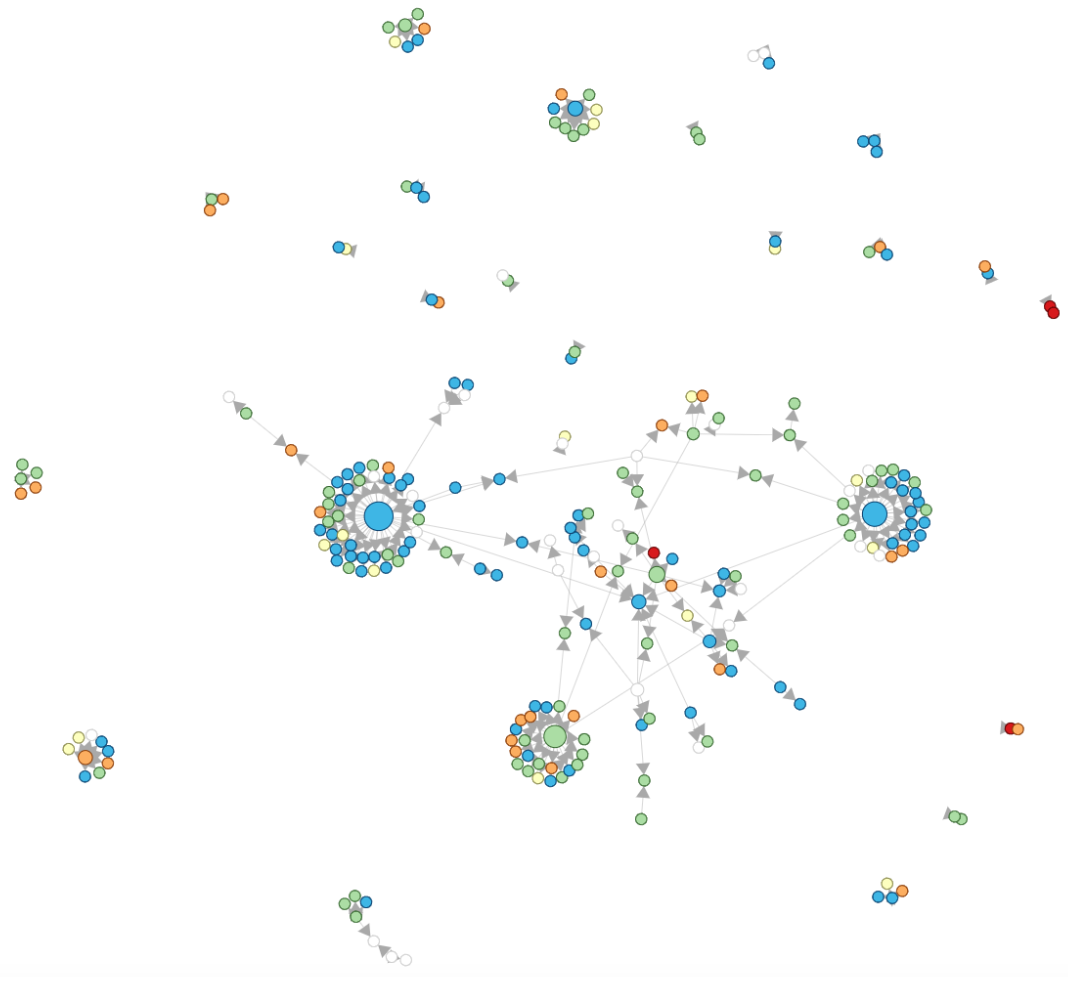
The Socialbearing tool helped us compile a list of most frequently used words in the tweets with the hashtag.
As we can see, Russian attempts to undermine Ukrainian information space drowned in the wave of jokes coming from Ukrainian tweeter users and media warnings about the attempted PSYOP.
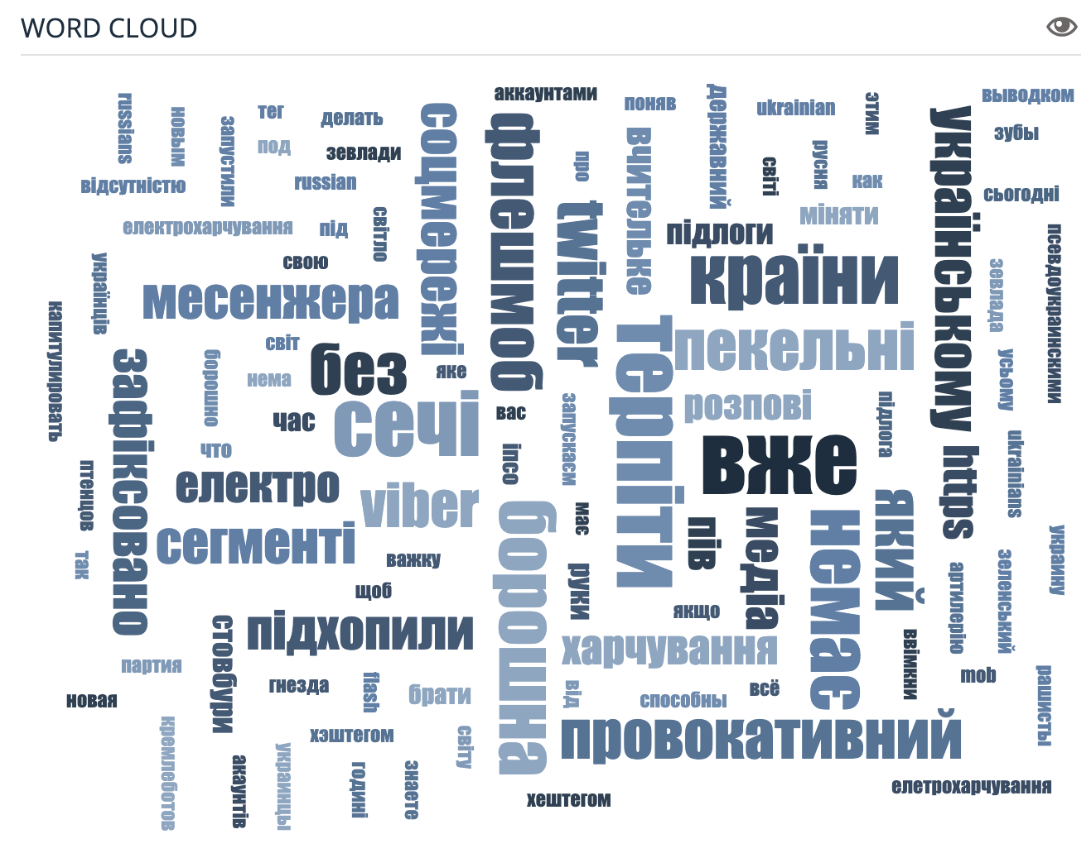
In addition to “urine” and “flour” wrongly translated through Russian: what did they intend to achieve?
In addition to a new portion of memes from Ukrainian tweeter users, this pathetic attempt of enemies to fake the “flash mob” shows that Russians continue to persistently search for ways to undermine Ukrainian society with their fake hits in social media. Although few Ukrainians have been Twiter users so far, this apparition of the PSYOP keeps reminding to us that the enemies systemically act on all possible fronts.
On the other hand, the attempted fakes in foreign languages indicate russians’ activity in a global information space.
Such fakes are also the tools for Russian propaganda targeting their own citizens as Russian media were the only ones joining the flash mob.
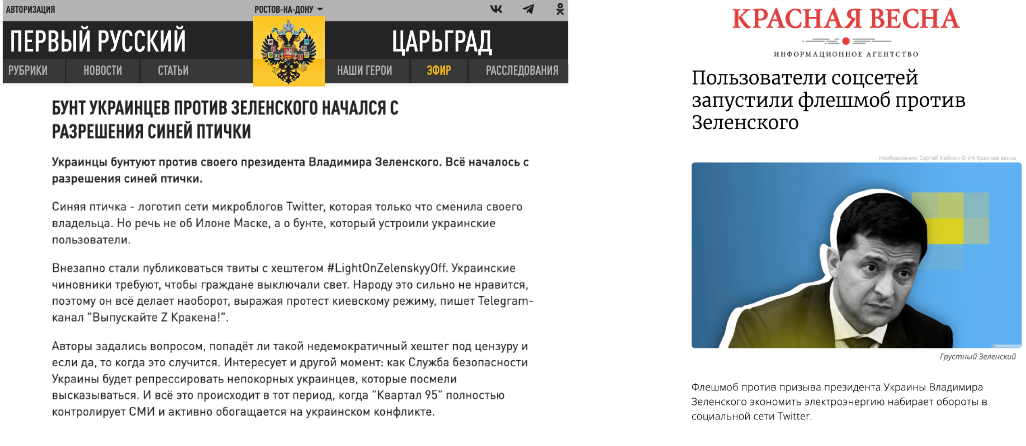
The messages help build an illusion that Ukrainian people are “trying to resist the Kyiv-based regime” and therefore, they need the “support” from the Russian army.
As we can see, Russian propaganda is trying to legitimize the war on Ukraine, among other things, for Russian citizens as it is actually waged at their expense.
Lessons Learnt From the Case
On the next day after the tweets with the hashtag #LightOnZelenskyyOff were shared, the Center for Countering Disinformation (CCD) at the NSDC labelled the disinformation as fake and untruthful. The post was further shared by Ukrainian media. However, at the moment of writing this report, the Center had deleted the original disclaimer for the “flash mob,” although the reposts are still available by Ukrainian media with links to the CCD’s deleted post.
It is hard to estimate the motivation for deleting the message. However, OPORA supports the cancel culture for such fakes coming from the National Security and Defense Council. There are several reasons for that.
First of all, according to our analysis, Ukrainian users have successfully identified and smothered the Russian attempted undermining of society on the social media such as Twitter. The disinformation’s goal was not to convince that certain statement was untrue but rather to create an atmosphere of uncertainty and chaos, long known as “it’s not so unambiguous.”
The case of the “flash mob” #LightOnZelenskyyOff shows that Ukrainian people managed to clear the air on the disinformation much more promptly than the official state institutions. Which is OK.
Secondly, in addition to waging the full-scale war in the battlefield, the enemy also uses the information space. The ongoing debunking of every new fake of that scale is a tactical rather than strategic fight.
The enemy operate in the modality of disinformation spamming. That is why, before sparing of the effort on debunking yet another fake, one must consider whether your institution should interfere on that stage or not. The following factors shall be taken into account in that regard:
- the scaling capacity of the fake and its dissemination in Ukraine and internationally;
- the level of threat and the balance of invested effort to create information materials and communicate them to debunk a specific fake;
- whether the fake relates to the “sensitive areas" of society it targets, whether it relates to topics with no public consensus behind or to low awareness topics.
When a fake scores low under the above factors, the experts should rather focus on a strategic level such as identifying networks and key actors in sharing and intensifying disinformation, its generation patterns, identification of sore points in the Ukrainian information war against Russia in other countries, etc.
In conclusion, the case with the rigged flash mob #LightOnZelenskyyOff is a success story of the media and of the digital literacy if Ukrainian users who efficiently killed the attempted Russian PSYOP with no need to rely on support of NGOs and government institutions.
The better Ukrainians are at independent identification and cancellation of the fake hits, the more efficient the joint information defense of the government and society against the aggressor.
